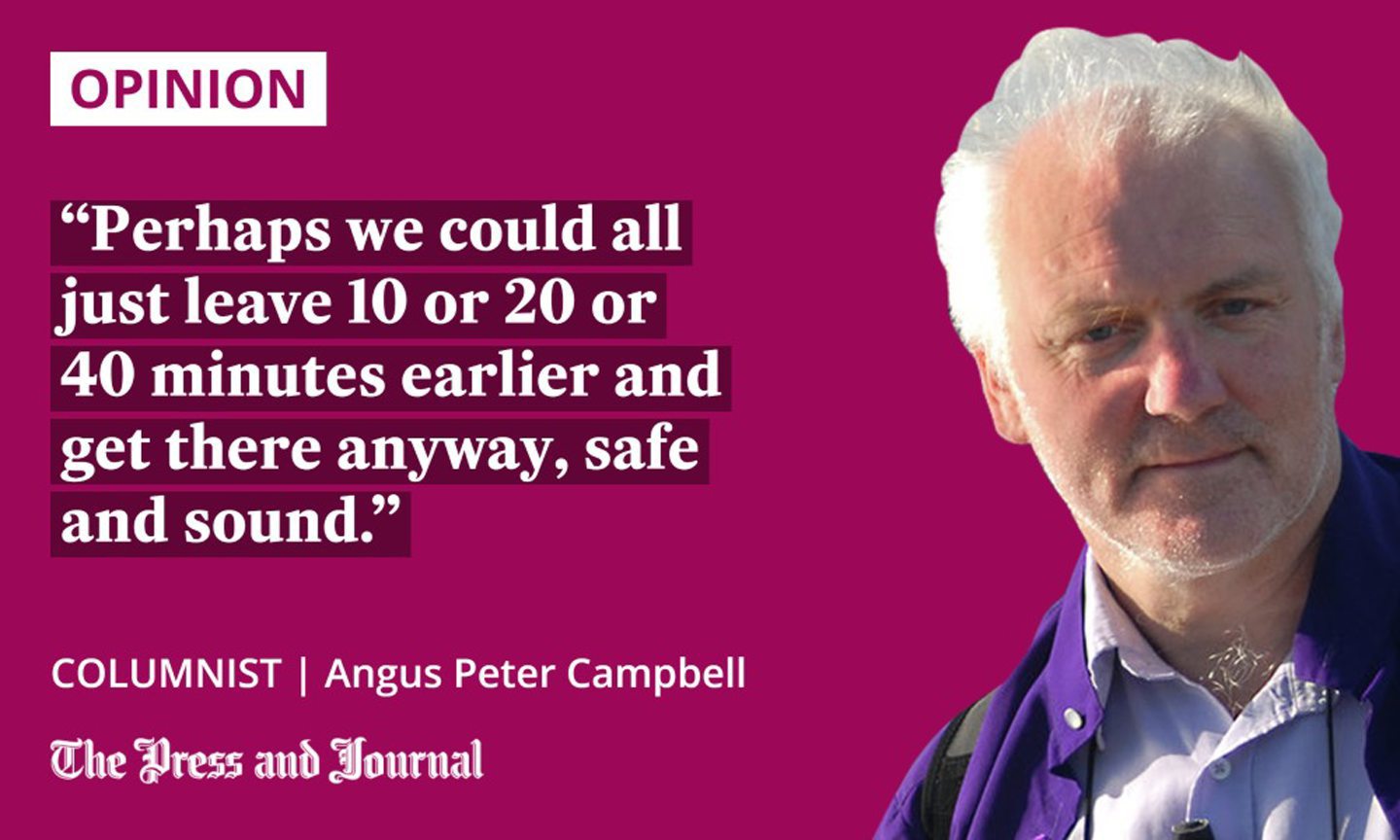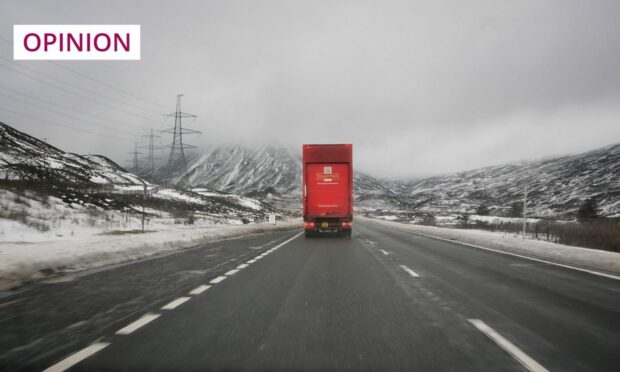This august newspaper is currently focusing on the A9, hoping to hold Holyrood to account when it comes to dualling the route, along with other improvement promises that were made long ago.
My own view is that we should go back to the future, and make all roads in the Highlands – let’s say north and west of Inverness, down as far as Oban – single-track once more.
I would add to that a new Highland Road Test, which all residents and visitors would need to pass, learning how to drive safely on single-track roads.
The maximum speed limit would be 50 miles per hour. All car-drivers would learn how to use passing places: to let oncoming traffic by, and to pull in to allow cars behind past. All drivers would also need to pass the pheasants and dogs and sheep and deer test – in other words, to give way at all times to these beautiful creatures who were here roaming through the heather long before the first Austin A40 trundled north all those years ago.
I’m old enough to remember the old A9. Oh, I know we all race up and down it these days, seeing nothing but the satnav screen or the back end of a lorry as we trail behind it up towards Drumochter Pass, but there was a day…
Once upon a time (up until the 18th century) the old drove roads connected the Gàidhealtachd with the Galltachd. Where “The Gàidhealtachd” starts or finishes is a debate in itself, though it’s always worth mentioning, for those who argue “Gaelic was never spoken here”, that place names themselves prove it was spoken from Sutherland to the Solway, from Argyll to Aberdeenshire.

The old drove roads were rapidly replaced after the tragedy of Culloden (in 1746), largely through General Wade’s roads, which were developed not for the benefit of my great-great-granny but for the benefit of the British state, which wanted to pacify and “civilize” the Highlands. “The law has finally reached Alness,” as a poor man complained in the 19th century.
I like to believe there was an early, golden age when motoring was a joy rather than a pain. Oh, I know it’s easy to look back and create a myth, and that these old cars could hardly climb a wee brae without huffing and puffing and steam rising out of the engine, but, neverthless, the roads were quieter and slower and it was possible to pull in by the roadside with your wicker picnic basket without being surrounded by a thousand other motorhomes with their satellite dishes and barbecues.
Speed is the real killer
I realise, of course, what the clamour to develop the A9 into a dual carriageway is all about: economics. I know that safety is the argument, though I’m not convinced. If people drove more slowly, and sensibly, it would be much safer in the first place.
Speed is the real killer, brought on by a combination of thrill, impatience and hurry. We all have places to go, and seem driven by the need to get there as quickly as possible. Perhaps we could all just leave 10 or 20 or 40 minutes earlier and get there anyway, safe and sound. Why hurry to get to Inverness anyway? Maybe to get out of it…?
Thing is, we all now inhabit such an instant world. It’s literally at our fingertips. A click here and my dinner is on its way. A click there and all the agonies and joys of the world are on display.
We email and expect instant answers. Facebook and Twitter and Instagram and Threads and Mastodon tell us what our friends (and enemies) are up to. We don’t really need to meet up with them down the pub or in the cafe or at church or wherever anymore, for the cèilidh is in the console. The medium itself is the message, as Marshall told us long ago.
Slow down and clock off
Driving, inside the air bubbles of our individual cars, surrounded by our (downloaded or streamed) music, is part of that global world, ruled by digital and technological speed. Which is why I want us all to slow down and clock off. To be counter-cultural. To value and protect and promote the local and the indigenous.
Whether that’s speaking Gaelic or Doric, or growing your own tatties and veg, or shopping locally, or using public transport (Oh, I know it’s not everywhere and it’s inconvenient and dear.) It all helps. As would that masterplan of mine to go back to single-track roads and an upper speed limit of 50 miles an hour.
And that Highland Road Test would also need to be exclusively taken in Gaelic, which would either instantly reduce the number of road-users to nice civilized Gaels, or exponentially increase the number of Gaelic speakers, all racing up and down the A9.
Angus Peter Campbell is an award-winning writer and actor from Uist











